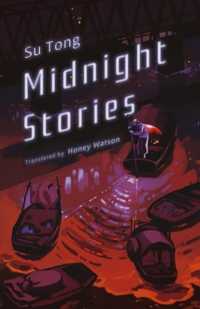- ホーム
- > 洋書
- > 英文書
- > History / World
Full Description
A lavishly illustrated account of the buildings of the friars in the middle ages, bringing them vividly to life.
with contributions from Ian M. Betts, Jens Röhrkasten, Mark Samuel, and Christian Steer.
Nominated for the Current Archaeology Book of the Year Award 2019
The friaries of medieval London formed an important partof the city's physical and spiritual landscape between the thirteenth and sixteenth centuries. These urban monasteries housed 300 or more preacher-monks who lived an enclosed religious life and went out into the city to preach. The most important orders were the Dominican Black friars and the Franciscan Grey friars but London also had houses of Augustine, Carmelite and Crossed friars, and, in the thirteenth century, Sack and Pied friars.
This book offers an illustrated interdisciplinary study of these religious houses, combining archaeological, documentary, cartographic and architectural evidence to reconstruct the layout and organisation of nine priories. After analysing anddescribing the great churches and cloisters, and their precincts with burial grounds and gardens, it moves on to examine more general historical themes, including the spiritual life of the friars, their links to living and dead Londoners, and the role of the urban monastery. The closure of these friaries in the 1530s is also discussed, along with a brief revival of one friary in the reign of Mary.
NICK HOLDER is a historian and archaeologist at English Heritage and the University of Exeter. He has written extensively on medieval and early modern London.
IAN M. BETTS is a building materials specialist at Museum of London Archaeology; JENS ROHRKASTEN was Lecturer in Medieval History at the University of Birmingham; MARK SAMUEL is an independent architectural historian; CHRISTIAN STEER is an independent historian, specialising in burials in medieval churches.
Contents
Introduction
The First Black Friars in Holborn, c. 1223-1286
The Second Black Friars, 1275-1538
The Third Black Friars at St Bartholomew's, 1556-1559
Grey Friars, 1225-1538
White Friars, c. 1247-1538
Austin Friars, c. 1265-1538
Crossed Friars, c. 1268-1538
Sack Friars, c. 1270-1305
Pied Friars, 1267-1317
Churches
Precincts and the use of space
Architecture and architectural fragments of the London friaries [Mark Samuel]
Floor tiles and building materials from the London friaries [Ian Betts]
Water supply
Economy
Spiritual life and education in the London friaries [Jens Röhrkasten]
Burial and commemoration in the London friaries [Christian Steer]
London friars and Londoners
Dissolution
Conclusions
Bibliography

![Criminal Procedure : Investigation and the Right to Counsel [Connected eBook with Study Center] (Aspen Casebook) (5TH)](../images/goods/../parts/goods-list/no-phooto.jpg)





